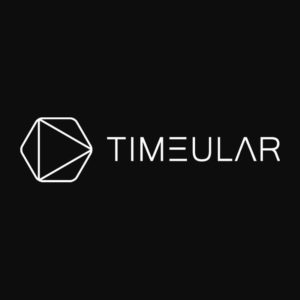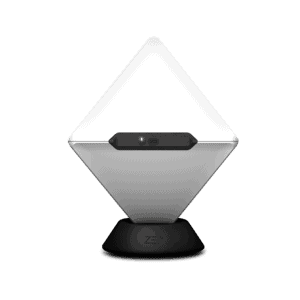Does Technology Actually Make You More Productive? Guest Blog from Timeular
This week we have a guest blog from the Team at Timeular discussing “Does technology actually make your more productive?”
 When it comes to productivity both in and out of the workplace, technology is sort of a double-edged sword. While it can certainly make life easier, it can also create distractions that ultimately eat away at your productivity. Your smartphone alone provides ample opportunities to check social media, take a Candy Crush break and participate in the never-ending group text. So, when it comes right down to it, do all the distractions actually negate any increase in productivity that technology might offer?
When it comes to productivity both in and out of the workplace, technology is sort of a double-edged sword. While it can certainly make life easier, it can also create distractions that ultimately eat away at your productivity. Your smartphone alone provides ample opportunities to check social media, take a Candy Crush break and participate in the never-ending group text. So, when it comes right down to it, do all the distractions actually negate any increase in productivity that technology might offer?
As you can imagine, the answer to this question isn’t a simple yes or no. Measuring productivity, especially against quantitative benchmarks, is difficult. What we do know is that taking a minute to check your Twitter feed amounts to a loss of time that far exceeds 60 seconds. The biggest problem with distractions is that they derail your thought process and it can take some time to get back on track.
In fact, Gloria Mark, who studies informatics at the University of California, Irvine, found that for every 30 seconds of distraction, you are losing 30 minutes of concentration. It takes a full half-hour to return to the original task with total focus. Your mind isn’t just wandering and checking out for a few seconds, it is taking a full lunch break every time you get distracted.
The Myth of Multitasking
The main reason that it takes us a full 30 minutes to regain focus after just one minute of distraction is that humans were not designed to multitask. In our modern, fast-paced world, we have come to accept the myth that not only is multitasking possible, but that is it an essential skill. In reality, humans were designed to focus on one task and despite centuries of evolution, this fundamental trait has not changed.
According to MIT neuroscientist Earl Miller, ‘When people think they’re multitasking, they’re actually switching from one task to another very rapidly. And every time they do, there’s a cognitive cost.” The idea that humans can simultaneously hold two thoughts or tasks in their head is simply false, which explains why we are so easily distracted in the face of pervasive technology.
The Consequences of “Multitasking”
Unfortunately, buying into the myth of multitasking can have far-reaching consequences that go beyond a simple decrease in productivity. When you become distracted by technology while trying to complete a task, your body will increase production of the stress hormone, cortisol. Studies have also shown that multitasking causes IQ drops similar to those in people who have ingested marijuana or missed a night of sleep. Giving into the urge to read that email or check your phone may actually be affecting your health.
How Our Productive Time Disappears in the Face of Technology
When it comes to losing productivity to technological distractions, you might be wondering where exactly employees are spending their time. Here is a list of the top three sources of technology-based distractions that are eating away at productivity:
In a 2015 study from Inc.com, participants stated that Google was their number one source of distraction. It is all too easy look up a piece of information and get lost down the rabbit hole. You might start by checking a fact for work and end up researching vacation spots or who was eliminated on last night’s reality TV show.
Social Media
It should come as no surprise that social media is the second most popular form of distraction among employees. While social media accounts provide businesses with a powerful tool for connecting and engaging with existing and potential customers, it also creates a slippery slope of distraction.
Last, but not least, email easily makes the cut for the top three sources of distraction. If you are toiling away at a mundane task, it can be hard to resist stopping what you are doing when a new email pops up in your inbox. While only about 14% of all emails people receive are actually important and worth reading and responding to, workers spend approximately 28% of their work week dealing with emails.
It is difficult to determine just how much these distractions add up to in lost time and productivity. Much of what we know about how much time workers waste on social media or other technological distractions comes from surveys were participants self-report. Obviously, workers are likely to underreport how much time they spend distracted. Subsequently, the numbers vary from 30 minutes to four hours a day depending on the study and who was surveyed.
Is There an Upside to Being Distracted?
Maybe. Technology puts us in contact with a constant stream of new information. Whether you are reading promotional emails, scanning the latest news and trends or connecting on social media, you are ingesting massive amounts of content. You never know where the inspiration for your next big idea might come from and engaging on such a large scale might just provide you with the right spark.
Back to Our Big Question
Is technology more or a distraction than a tool for productivity? We believe that the answer comes down to how you use technology and how you incorporate new tools to combat the effects of constant distractions. There are several strategies you can use to make sure you’re getting the most out of using technology:
Establish clear boundaries and schedules
Block off certain periods throughout the day for checking email. You might consider setting aside 30 minutes at the beginning and end of the day so that you can spend the bulk of your time focusing on completing larger projects. Also, let friends and family know that you will only be able to respond to texts during lunch. This will avoid a constant stream of messages that probably aren’t all that important.
Set limits for your social media time
If you need to be on certain accounts for work, be sure to use your time wisely and stay on task. Again, set a 20-30 minute window for completing any social media tasks so that you can move on to other projects with a clear head.
Use the right tools
There are also some tools on the market that can help you avoid distractions and stay on task, like our time-tracking tool ZEI°. It helps you keep track of how much time you spend on specific tasks without interrupting your concentration and workflow. As ZEI° is a physical device that you simply flip to start and stop tracking your activities, you don’t need to interact with any software while you are focussed on other tasks. This lowers the risk of getting distracted.
The bottom line: Yes, technology can be a distraction that can diminish your productivity. However, technology has also made the modern workplace more streamlined, efficient and accessible than ever. We believe the trick, as with any double-edge sword, is to use it correctly so that you don’t end up getting cut.
About Timeular
Timeular are the creators of a new innovative product called ZEIº, it is a polygon with a wireless Bluetooth connection to the computer and through software, you can assign a project to each face of the polygon. Then ZEI° will immediately start tracking the time of the project which has its corresponding side facing up. Users need to simply flip the device to start and stop tracking different tasks and activities. It’s very clever and I am sure those of you who love gadgets or who are looking for a new way to track time will definitely want to get your hands on one. Learn more about this great product here.
You can connect with them on social media as follows:
This blog first appeared on the Timeular website and is reproduced here with their permission.